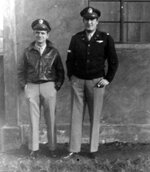Wild_Bill_Kelso
Senior Master Sergeant
- 3,231
- Mar 18, 2022
I don't think so, Wild Bill. Nowhere NEAR that many. That's more than many loss rates and was not seen in those numbers.
The P-51 in the ETO had a loss rate of 1.18% for the entire war. That's 84.9 sorties per loss.
You're saying 1 in 12 or 16 aborted for "engine problems?" Let's look at 1 in 12. That's an abort rate of 8.33%, or 7 times the loss rate! I don't know of a CO or an upper command who'd put up with an abort rate 7 times the loss rate.They'd get to the bottom of that in a hurry or someone's head would roll.
Somehow every discussion of air war in WW2 seems to slide back toward 8th AF flying out of England. This part of the war has never been a major interest of mine so I can't comment on maintenance and reliability rates flying out of a soft green field outside of Cambridge in 1944. I imagine they would be fairly good with aircraft maintained in hangars, temperate weather, good supply chains etc.
I'm talking about units flying out of Pacific Islands, Darwin, China, Burma, Syria, Egypt, Tunisia etc. in 1941-1943, during the pivotal years of the war. Plenty of heads of course did roll as some of these units were routinely taking near 100% casualties. Others maintained a fairly low serviceability rate.
I'll post some examples since apparently nobody knows what I'm talking about here.


![355fg Shuttle Mission_18sep1944 [hovde and marshall].jpg](/forum/data/attachments/776/776926-3da14920c980613f59a763d081fc3df9.jpg)
![355fg Shuttle_YFN_Baltimore Jo Jo_Maisch [hovde].jpg](/forum/data/attachments/776/776927-914753913febe492b4ca55cce51f52ca.jpg)